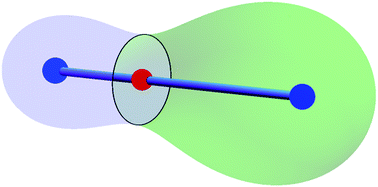Deciphering the “chemical” nature of the exotic isotopes of hydrogen by the MC-QTAIM analysis: the positively charged muon and the muonic helium as new members of the periodic table
Abstract
This report is a primarily survey on the chemical nature of some exotic species containing the positively charged muon and the muonic helium, i.e., the negatively charged muon plus helium nucleus, as exotic isotopes of hydrogen, using the newly developed multi-component quantum theory of atoms in molecules (MC-QTAIM) analysis, employing ab initio non-Born–Oppenhiemer wavefunctions. Accordingly, the “atoms in molecules” analysis performed on various asymmetric exotic isotopomers of the hydrogen molecule, recently detected experimentally [Science, 2011, 331, 448], demonstrates that both the exotic isotopes are capable of forming atoms in molecules and retaining the identity of hydrogen atoms. Various derived properties of atomic basins containing the muonic helium cast no doubt that apart from its short life time, it is a heavier isotope of hydrogen while the properties of basins containing the positively charged muon are more remote from those of the orthodox hydrogen basins, capable of appreciable donation of electrons as well as large charge polarization. However, with some tolerance, they may also be categorized as hydrogen basins though with a smaller electronegativity. All in all, the present study also clearly demonstrates that the MC-QTAIM analysis is an efficient approach to decipher the chemical nature of species containing exotic constituents, which are difficult to elucidate by experimental and/or alternative theoretical schemes.


 Please wait while we load your content...
Please wait while we load your content...